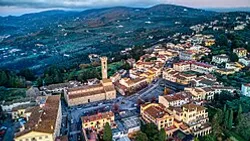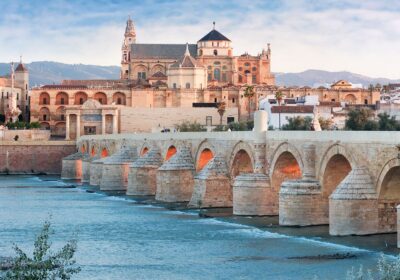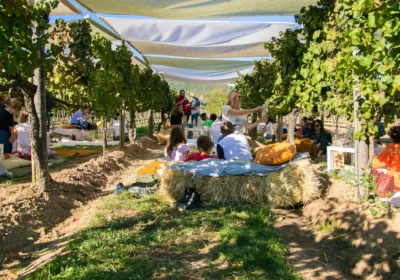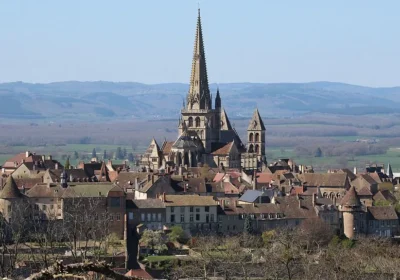Fiesole.
Fiesole is the closest, oldest and most famous of all Florentine suburbs.
The Etruscans settled here as early as the 10th century B.C. It sits on a hill separating the valleys of the Arno and Mugnone rivers, overlooking Florence, which emerged later. Fiesole was the birthplace of the famous Renaissance sculptor Mino da Fiesole. The main square, around which the historic centre of the town is concentrated, bears his name. The town is of Etruscan origin and is situated on a hill. From here you can enjoy a marvellous view of Florence. Fiesole should also be visited to enjoy the beauty of the landscape and to see the archaeological ruins and art monuments.
Fiesole was a particular favourite with foreigners visiting Florence in the 19th century and many of them even lived here, such as the English Pre-Raphaelite painters in the former Medici villa, which was rented by the British artist and collector William Blundell Spence.
In Piazza Mino da Fiesole, which sprang up on the site of the ancient Forum, is the Praetorian Palace (16th century) next to which are the ancient chapel of Santa Maria Primerana
Seminary
Bishop’s Palace
The Romanesque-style Cathedral of St Roch. Inside the cathedral, in addition to works by Giovanni della Robbia, Bicci di Lorenzo. Mino da Fiesole, the Salutati Chapel with frescoes by Cosimo Rosselli (15th century)
The archaeological area attracts attention with the Roman theatre, where various concerts are held in summer, as well as Roman thermae, a Roman temple and part of the Etruscan walls.
The Archaeological Museum houses works of art found during excavations within the city. The Bandini Museum houses the collection of the polymath Angelo Maria Bandini, which includes paintings of the Tuscan school from the 13th to 15th centuries.
The Church of St Francis is located at the top of the hill where the ancient acropolis was located, and the Missionary Ethnographic Museum is located nearby.

















